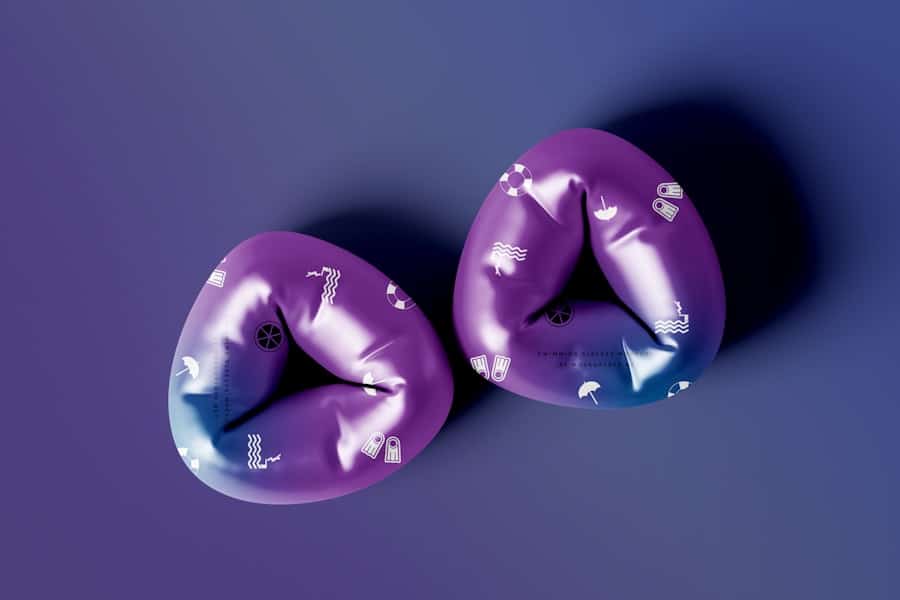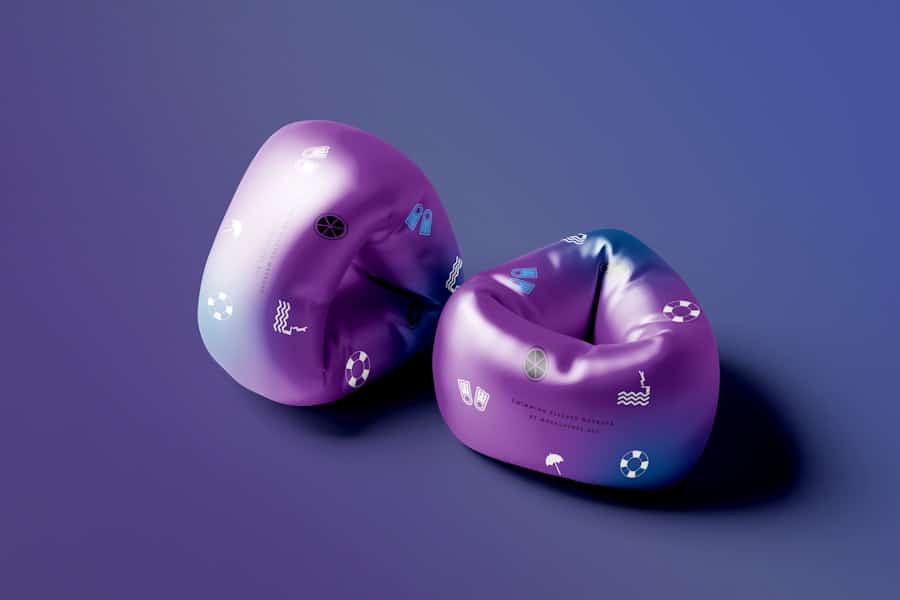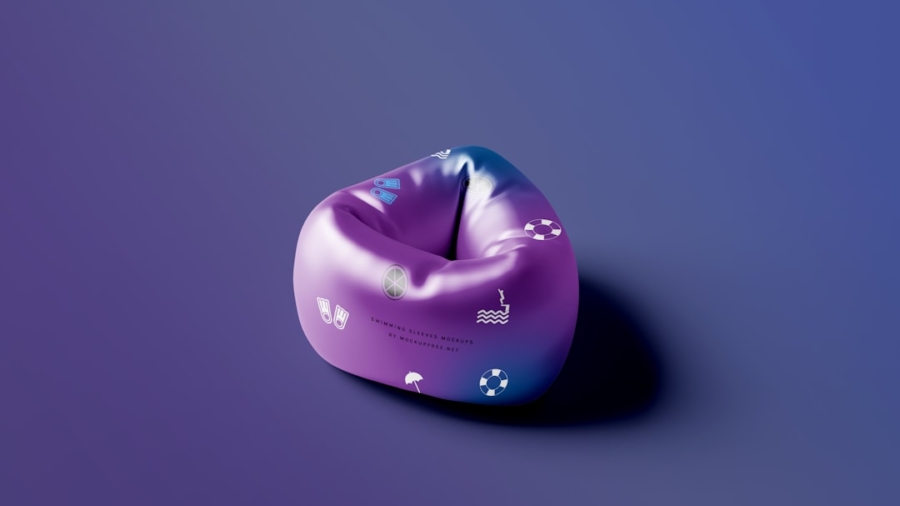In recent years, the proliferation of wearable technology has transformed the way individuals monitor their health and fitness. Among these innovations, smart rings have emerged as a compact and stylish alternative to traditional wearables like smartwatches and fitness bands. These rings, often equipped with advanced sensors and connectivity features, offer users a discreet means of tracking various health metrics without the bulkiness associated with other devices.
The appeal of smart rings lies not only in their functionality but also in their aesthetic versatility, allowing users to seamlessly integrate them into their daily lives. Smart rings are designed to be worn continuously, providing real-time data that can be invaluable for health management. Unlike their larger counterparts, these rings can be worn on any finger and come in a variety of designs, making them suitable for both casual and formal occasions.
As technology continues to advance, the capabilities of smart rings are expanding, leading to increased interest from consumers and health professionals alike. This article delves into the potential of smart rings in health monitoring, exploring how they work, the benefits they offer, the types of data they can track, and the challenges they face in the evolving landscape of wearable technology.
Key Takeaways
- Smart rings are wearable devices that have the potential to revolutionize health monitoring by tracking various health data in real-time.
- Smart rings use sensors to monitor vital signs and other health data, providing users with valuable insights into their overall well-being.
- The benefits of using smart rings for health monitoring include convenience, continuous monitoring, and the ability to track a wide range of health data.
- Smart rings can track a variety of health data, including heart rate, sleep patterns, activity levels, and even stress levels, providing a comprehensive view of an individual’s health.
- While smart rings offer many potential benefits, there are also challenges and limitations to consider, such as accuracy of data and privacy concerns.
The Potential of Smart Rings in Health Monitoring
The potential of smart rings in health monitoring is vast, as they can provide users with insights into their physiological states that were previously only accessible through more cumbersome devices or clinical settings. With the rise of preventive healthcare, individuals are increasingly seeking ways to take charge of their health proactively. Smart rings can play a pivotal role in this shift by offering continuous monitoring of vital signs and other health indicators.
For instance, they can track heart rate variability, sleep patterns, and even stress levels, enabling users to make informed decisions about their lifestyle choices. Moreover, smart rings can serve as an early warning system for potential health issues. By analyzing trends in the data collected over time, these devices can alert users to irregularities that may require medical attention.
For example, a sudden spike in heart rate or a significant change in sleep quality could indicate underlying health problems that warrant further investigation. This proactive approach to health monitoring not only empowers individuals but also has the potential to reduce healthcare costs by catching issues before they escalate into more serious conditions.
How Smart Rings Work

Smart rings operate through a combination of sensors, algorithms, and connectivity features that work together to collect and analyze health data. At the core of these devices are various sensors that measure physiological parameters such as heart rate, temperature, and motion. For instance, photoplethysmography (PPG) sensors are commonly used to detect changes in blood volume in the microvascular bed of tissue, allowing for accurate heart rate monitoring.
Additionally, accelerometers can track movement patterns, which are essential for assessing activity levels and sleep quality. Once the data is collected, it is processed using sophisticated algorithms that interpret the raw information into meaningful insights. These algorithms can identify patterns and trends over time, providing users with a comprehensive view of their health status.
Most smart rings are equipped with Bluetooth technology, enabling them to sync with smartphones or other devices for data visualization and analysis through dedicated applications. This connectivity allows users to access their health metrics in real-time and receive personalized feedback based on their individual data.
Benefits of Using Smart Rings for Health Monitoring
The benefits of using smart rings for health monitoring extend beyond mere convenience; they encompass a range of advantages that enhance user experience and promote better health outcomes. One significant benefit is the discreet nature of smart rings compared to bulkier wearables. Many individuals may feel self-conscious wearing a smartwatch or fitness tracker, especially in professional or formal settings.
Smart rings offer a more subtle alternative that can blend seamlessly with everyday attire while still providing essential health tracking capabilities. Another advantage is the continuous monitoring aspect that smart rings facilitate. Unlike traditional methods of health assessment that may rely on periodic check-ups or manual logging of data, smart rings provide real-time insights into an individual’s health status.
This continuous feedback loop encourages users to engage more actively with their health management strategies. For example, if a user notices a decline in sleep quality tracked by their smart ring, they may be motivated to adjust their bedtime routine or seek professional advice to address potential sleep disorders.
Types of Health Data Smart Rings Can Track
Smart rings are capable of tracking a diverse array of health data, making them versatile tools for personal health management. One of the primary metrics monitored by these devices is heart rate. By continuously measuring heart rate variability (HRV), smart rings can provide insights into cardiovascular health and stress levels.
HRV is particularly valuable as it reflects the autonomic nervous system’s response to stressors and overall well-being. In addition to heart rate monitoring, many smart rings also track sleep patterns. By analyzing movement and heart rate data during sleep cycles, these devices can provide users with detailed reports on sleep duration, quality, and disturbances throughout the night.
This information is crucial for individuals looking to improve their sleep hygiene or address sleep-related issues such as insomnia or sleep apnea. Furthermore, some advanced smart rings can monitor additional metrics such as body temperature and blood oxygen levels. These parameters can be indicative of various health conditions and provide users with a more comprehensive understanding of their overall health status.
Challenges and Limitations of Smart Rings

Despite their numerous advantages, smart rings also face several challenges and limitations that may hinder widespread adoption and effectiveness in health monitoring. One significant challenge is the accuracy and reliability of the data collected by these devices. While many smart rings utilize advanced sensors and algorithms, variations in individual physiology and external factors can impact measurement accuracy.
For example, factors such as skin tone, body composition, and even environmental conditions can affect sensor performance. Another limitation is battery life and charging frequency. Many smart rings are designed to be lightweight and compact, which can sometimes compromise battery capacity.
Users may find themselves needing to recharge their devices frequently, which could disrupt continuous monitoring efforts. Additionally, some individuals may be hesitant to adopt wearable technology due to concerns about privacy and data security. As smart rings collect sensitive health information, ensuring robust security measures are in place is essential to build user trust.
Future Developments and Innovations in Smart Ring Technology
The future of smart ring technology holds exciting possibilities as advancements in materials science, sensor technology, and artificial intelligence continue to evolve. One area of innovation is the development of more sophisticated sensors that can provide even greater accuracy in health monitoring. Researchers are exploring new materials and designs that could enhance sensor performance while maintaining the compact form factor that makes smart rings appealing.
Moreover, the integration of artificial intelligence (AI) into smart ring applications could revolutionize how users interact with their health data.
This could lead to personalized health recommendations tailored to individual needs and preferences.
For instance, an AI-driven app could suggest lifestyle changes based on a user’s unique physiological responses tracked by their smart ring. Additionally, as telehealth continues to gain traction, smart rings could play a crucial role in remote patient monitoring. Healthcare providers may leverage data from smart rings to monitor patients’ conditions outside traditional clinical settings, allowing for timely interventions when necessary.
This shift towards remote monitoring could enhance patient outcomes while reducing the burden on healthcare systems.
The Role of Smart Rings in Promoting Personal Health
Smart rings represent a significant advancement in wearable technology with the potential to transform personal health management. By providing continuous monitoring of vital health metrics in a discreet form factor, these devices empower individuals to take control of their well-being proactively. As technology continues to advance, the capabilities of smart rings will likely expand further, offering even more comprehensive insights into personal health.
The integration of smart rings into daily life not only promotes awareness but also encourages healthier lifestyle choices through real-time feedback and personalized recommendations. While challenges remain regarding accuracy and user adoption, ongoing innovations promise to enhance the functionality and reliability of these devices. As we move towards a future where preventive healthcare becomes increasingly important, smart rings will undoubtedly play a pivotal role in promoting personal health and well-being for individuals around the globe.
In the realm of wearable technology, smart rings are emerging as a discreet and innovative tool for health monitoring. These compact devices offer a subtle way to track vital health metrics, making them an attractive option for those seeking unobtrusive health management solutions. For individuals interested in exploring other tech gadgets, such as those used for creative purposes, the article on

